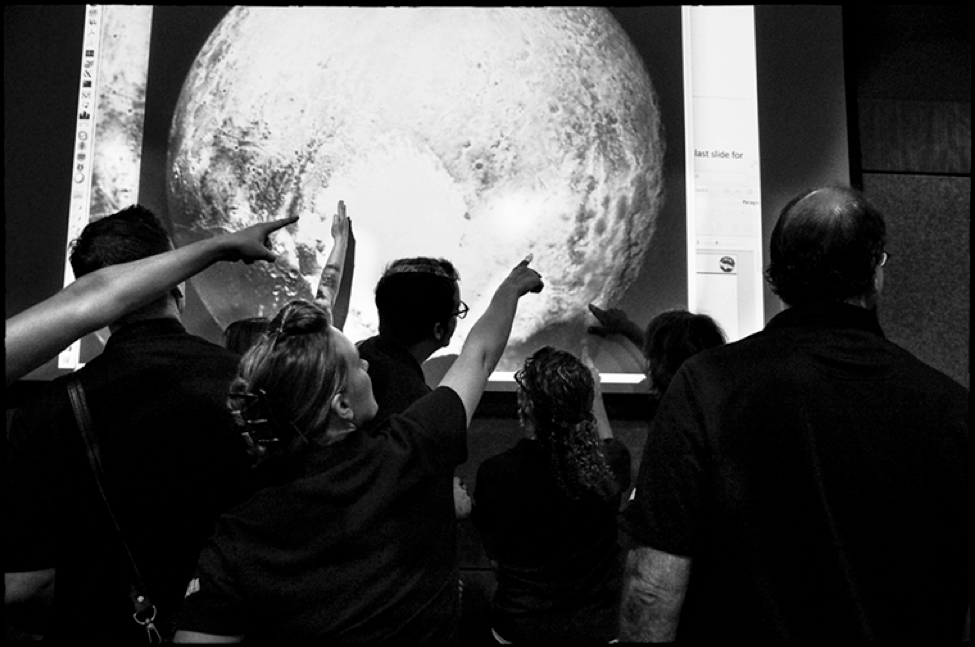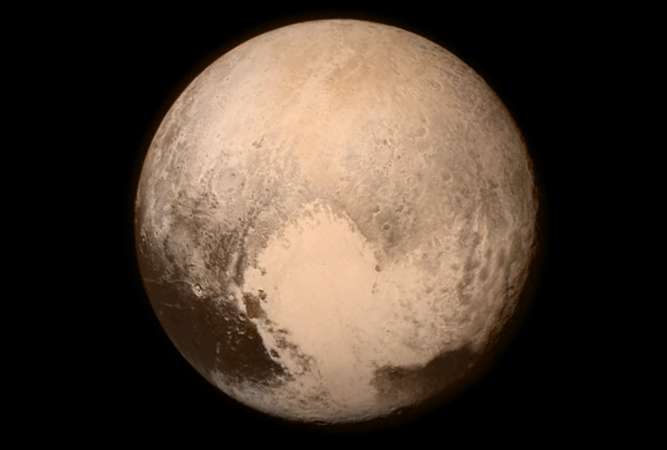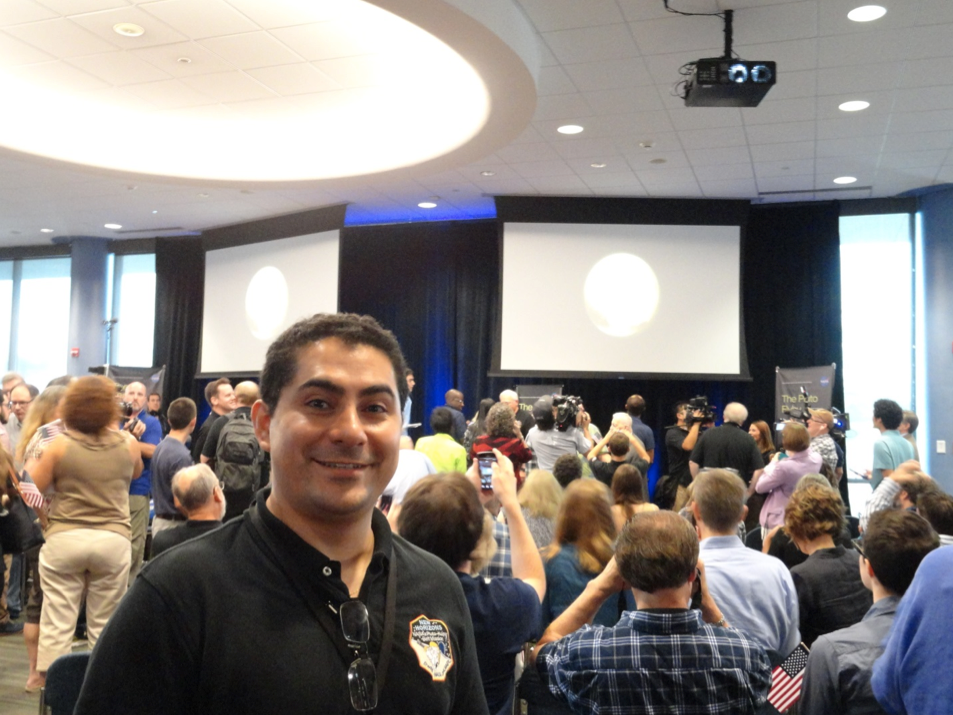Jorge Núñez, a planetary scientist and engineer from the Johns Hopkins University Applied Physics Laboratory (APL), is the deputy systems engineer of the Long Range Reconnaissance Imager (LORRI) instrument on New Horizons. He studies the geology and composition of planetary surfaces using a variety of remote-sensing techniques. When not working on New Horizons or analyzing data from NASA missions, he also studies terrestrial analogs on Earth and develops new instruments for future planetary missions.
As a young child growing up in Colombia and later in the U.S., I learned about the nine classical planets in our solar system. Four terrestrial planets: Mercury, Venus, Earth and Mars. Four gas giants: Jupiter, Saturn, Uranus and Neptune. And then there was Pluto, at the edge of our solar system. All of the planets had been visited by spacecraft except Pluto; it was unknown and unexplored. I never imagined that I would be part of the first mission to see this mysterious, incredible world up-close.
As the deputy systems engineer for the Long Range Reconnaissance Imager (LORRI) on NASA’s New Horizons spacecraft, my role is to help make sure that LORRI is healthy, works properly, and that its images are acquired successfully. In addition, I help to make sure that commands sent to the instrument are correct.
LORRI is a panchromatic high-resolution telescopic camera composed of a telescope with an 8.2-inch (20.8-centimeter) aperture that focuses visible light onto a charge-coupled device (CCD). Similar to a grayscale digital camera with a large telephoto lens, LORRI imaged Pluto and its five moons from long distances during approach and mapped the surface of Pluto in unprecedented detail during New Horizons’ historic flyby on July 14, 2015. At closest approach, LORRI was able to image sections of Pluto’s sunlit surface at a resolution of about 70 meters, or roughly the size of a football field.
After New Horizons came out of hibernation for the last time, in December 2014, LORRI began to acquire a few images daily. During the months before the encounter, these images were used to help the spacecraft navigate toward the desired flyby location and help scientists refine orbit calculations of Pluto and its moons. In addition, LORRI was used to look for additional moons and potential rings that could have posed a hazard to the spacecraft. New Horizons was flying so fast, at approximately 31,000 miles per hour (14 kilometers per second), that a collision with something as small as a grain of rice could have been catastrophic.
As New Horizons sped closer, Pluto, which initially appeared as a small dot in LORRI images, grew to a system with multiple objects. The complex surface features on Pluto and its largest moon, Charon, came into better focus. Each LORRI image was better than the next. The team worked day and night to keep up with the data and images coming down with each transmission from New Horizons. LORRI images were posted on the New Horizons project website so the world could follow along in the excitement.

On July 13, the night before closest approach, the last LORRI image before the encounter was transmitted to Earth. This was the best view of Pluto we would receive before New Horizons flew by Pluto. It became my responsibility and privilege to verify that the image came down properly before it was unveiled to the team and the world the next morning. When unveiled the next morning, the image became an instant icon.

During the encounter of the Pluto system, LORRI worked flawlessly and acquired more than 1,800 images of Pluto and its moons during closest approach and flyby. Since the encounter, the stored LORRI images on New Horizons’ digital recorders have been coming down to Earth and will continue to come down through at least this September. They reveal a fascinating, complex world with a diversity of landforms like mountains made of water ice, and volcanoes and glaciers of exotic ice. More remains to be discovered.
And LORRI’s mission is not yet over! The LORRI team is now preparing for the flyby of the Kuiper Belt object known as 2014 MU69. If NASA extends the New Horizons mission to accomplish this flyby, New Horizons will reach 2014 MU69 on Jan. 1, 2019. LORRI will provide the first close-up observations of an object thought to represent what the outer solar system was like following its birth 4.6 billion years ago. More mysteries to be revealed by LORRI and New Horizons await!

